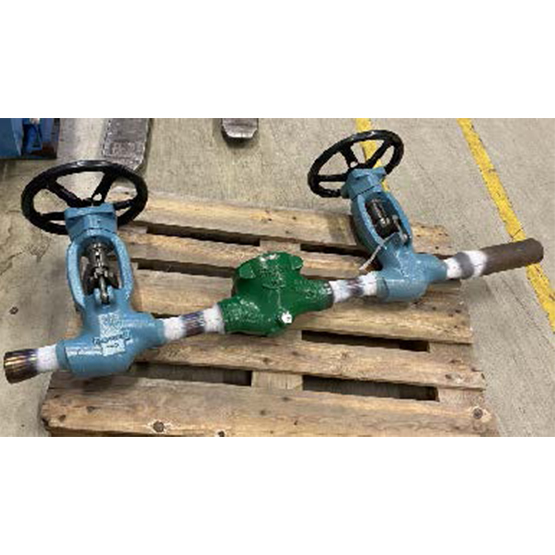Vibrations in Piping Systems
Any questions?
Tommi Penttilä
Sales Manager Conventional Power
Phone. 0207 416 208
Mob. 040 512 2308
From Problem to Complete Solution
Need
The customer reached out to Askalon regarding an operational issue that arose after a power increase in their steam boiler. The change resulted in severe vibrations in the water pipeline for steam cooling in the boiler's intermediate superheater stage. The problems occurred when the control valve approached a 60–65% opening degree, causing operational disturbances and concerns about potential damage to the piping system.
Analysis
Askalon analyzed the issue with the installed valve and conducted flow calculations using simulation software. The existing control valve was found to be three sizes smaller than the pipeline, which, at the current opening degrees, resulted in a water velocity of up to 10 m/s at the valve outlet. At high velocities, pressure variations occur, leading to stress in the piping system. Calculations showed a significant risk of the pressure dropping to a level where cavitation could occur. Cavitation happens when bubbles form due to the pressure temporarily dropping below the vaporization pressure and then collapsing when the pressure recovers. This phenomenon amplifies vibrations in both the valve and the pipeline.
Solution
The conclusion was clear - to ensure stable operation and eliminate vibrations, the velocity at the valve outlet needed to be reduced. The solution was a new control valve with a similar flow capacity but a larger outlet area. After an on-site inspection, Askalon also recommended adding shut-off valves upstream and downstream of the control valve to enable future maintenance safely.
To reduce the risk of cavitation, shut-off valves with limited flow capacity were used to distribute the pressure drop between the control valve and the shut-off valves. The existing actuator with a positioner was assessed to be in good condition and could be reused.
To simplify installation and minimize downtime, prefabrication of a pipe section containing the new equipment was recommended. By preparing welding and weld testing in advance, the work required during the final installation was reduced, shortening the installation time and increasing flexibility for execution during a planned maintenance shutdown.
Beyond eliminating vibrations, the solution resulted in a safer working environment for maintenance personnel and a smooth, flexible solution that allowed for future maintenance without unnecessary operational disruptions.
Proven Industrial Improvements
- Vibration-free operation through a solution based on a root-cause analysis.
- Improved accessibility and safety for maintenance work by evaluating the existing installation.
- Reduced installation costs by reusing the existing actuator with a positioner.
- Minimized downtime for installation since a prefabricated pipe section with the new equipment was used.















